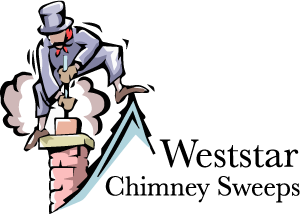 To become Chimney Safety Institute of America (CSIA)-certified chimney sweeps, our chimney technicians at Weststar Chimney Sweeps must pass an examination on the National Fire Prevention Association (NFPA) standard code 211, the standard for chimneys, fireplaces, vents, and solid fuel burning appliances. In this code, the NFPA developed three different levels of chimney inspections that all chimney sweep certified by the CSIA must strictly follow. Since the CSIA recommends an annual chimney sweeping and inspection, the organization also strongly suggests you should ask for the appropriate level of inspection for your chimney and venting system. To inform you of what each level involves to help you know which level to request, we would like to share with you an explanation of what happens during each chimney inspection level.
To become Chimney Safety Institute of America (CSIA)-certified chimney sweeps, our chimney technicians at Weststar Chimney Sweeps must pass an examination on the National Fire Prevention Association (NFPA) standard code 211, the standard for chimneys, fireplaces, vents, and solid fuel burning appliances. In this code, the NFPA developed three different levels of chimney inspections that all chimney sweep certified by the CSIA must strictly follow. Since the CSIA recommends an annual chimney sweeping and inspection, the organization also strongly suggests you should ask for the appropriate level of inspection for your chimney and venting system. To inform you of what each level involves to help you know which level to request, we would like to share with you an explanation of what happens during each chimney inspection level.
LEVEL 1
The simplest of the three levels of chimney inspection, ask for a Level 1 if your appliance or venting system have not changed and you are planning on using it as you normally have in the past. In this level of inspection, Weststar Chimney Sweeps will inspect all readily accessible parts of your chimney’s exterior and interior and all accessible parts of your chimney’s connection to the appliance. Checking for the soundness of structure and proper installation, our chimney inspectors will also verify your chimney is free from blockages and combustible creosote deposits.
LEVEL 2
Required when any change is made to your system, a Level 2 inspection examines changes in fuel type, changes to the size and shape of your flue, and changes to the heating appliance, such as when you have a fireplace insert installed. You must also request a Level 2 if you are selling or transferring your home and after building fires, chimney fires, earthquakes and tremors, and any weather-related event. Including everything performed in a Level 1 inspection, a Level 2 also examines the accessible parts to your chimney’s exterior and interior, including attics, crawl spaces, and basements. This level of inspection also addresses clearance from combustibles.
LEVEL 3
If a Level 1 or 2 inspection reveals a hidden hazard that cannot be evaluated without special tools to access concealed areas of your chimney or flue, Weststar Chimney Sweeps will recommend a Level 3 inspection, which is the most detailed of the three levels of inspection. When necessary, certain parts of the chimney must be removed for the evaluation to be complete. Parts that may be removed include the chimney crown or an interior wall of the chimney. This is only required when access is needed to areas that are subject to the inspection. Also, during a Level 1 or 2 inspection, if our chimney inspectors feel a serious hazard is present within your chimney or venting system, a Level 3 inspection may be required to examine the entire chimney or venting system.
Have questions about the three levels of chimney inspection? Contact Weststar Chimney Sweeps to find out more about each level.
